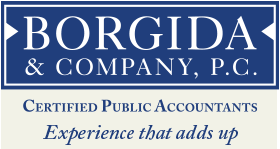
The Payroll Protection act is a loan program intended to provide American small business with eight weeks of cash-flow assistance through 100% federally guaranteed loans. 100% of the loan can be forgiven if certain guidelines are followed. The CARES Act lists the expenses that are subject to forgiveness and establishes a calculation to determine how much of your loan could be forgiven. Understanding each component of this calculation is important to maximize the benefit companies are entitled to receive.
What is Forgivable?
The CARES Act lists four (4) categories of expenses that are forgivable. This means that your PPP loan is forgivable to the extent you spend the proceeds of your loan on these four categories, provided you maintain the headcount and salaries of employees at the same pre-Covid-19 level. Another important requirement is that you actually pay for these expenses during the “covered period,” which is defined as the 8-week period immediately after your receipt of the loan proceeds.
1. Payroll costs – Payroll costs as defined by the SBA include gross salaries, wages, commissions or similar compensation of employees up to a cap of $100,000 per year, employer-paid health insurance, 401k matching contributions, and employer-paid state unemployment insurance. Payroll costs do not include the employer’s portion of payroll tax expenses such as Social Security and Medicare. A critical requirement for is that at least 75% of the loan forgiveness amount must be attributable to payroll costs.
2. Rent Obligations – Payments under a lease agreement in force before February 15, 2020.
3. Utilities – The CARES Act defines utilities to include: electricity, gas, water, transportation, telephone, or internet service for which service began before February 15, 2020.
4. Interest – The CARES Act uses a term “covered mortgage obligation,” to describe which interest payments could be subject to forgiveness. Interest payments can be for any debt obligation that is a liability of the borrower incurred before February 15, 2020. It does not include payments or prepayments of principal. The Act does stipulate however that the underlying debt must be a “mortgage on real or personal property.”
What are the tax implications?
The CARES Act states that the forgiveness of debt under the PPP program will not be taxable to the borrower. However, Notice 2020-32 provides guidance regarding the deductibility of expenses that are paid with funds that are forgiven under a PPP loan. The Notice confirms you can’t claim tax deductions, even if the wages, rent, etc. are normally fully deductible.
How to calculate your maximum forgiveness
Once your business has determined the payments eligible for forgiveness, you will need to complete two additional calculations to determine if such amount is ultimately forgivable. Both calculations are based on your payroll: the first is a measurement of your number of Full Time Equivalents (“FTEs”), and the second is a measurement of your actual salary expense. The purpose of these calculations is to ensure that debt forgiveness is directly related to the purpose of the CARES Act – to keep employees working at wages comparable to pre-COVID-19 levels.
Headcount Analysis:
Your loan forgiveness will be reduced if you decrease your full-time employee headcount. If a business reduces its full-time employees during the “covered period” (defined as the 8-week period after the company receives its first disbursement of PPP funds), the forgiveness amount is reduced by a ratio defined as:
- The average number of FTEs during the covered period (numerator) divided by the average number of FTEs during the base period described below (denominator). For the purposes of the calculation, the current thinking is that one FTE equals one employee that worked at least 30 hours in a week.
There are three different options to determine the base period, and borrowers can select the one most favorable to them:
- Using 2019 Information –the average number of FTEs per month from February 15, 2019, through June 30, 2019
- Using 2020 Information –the average number of FTEs per month from January 1, 2020, to February 29, 2020
- Seasonal Businesses –the average number of FTEs per month from February 15, 2019, through June 30, 2019
Wage Analysis:
Your loan forgiveness will also be reduced if you decrease salaries and wages by more than 25% for any employee that made less than $100,000 annualized in 2019. This is a safeguard to ensure that companies were hiring back employees at a wage rate that was similar to pre-Covid-19 levels
How do you get loan forgiveness?
You also have to specifically request loan forgiveness. You can submit a request to the lender that is servicing the loan. The request will include documents that verify the number of full-time equivalent employees and pay rates, as well as the payments on eligible mortgage, lease, and utility obligations. You must certify that the documents are true and that you used the forgiveness amount to keep employees and make eligible mortgage interest, rent, and utility payments. The lender must make a decision on the forgiveness.
This article is based on currently available information regarding the Payroll Protection Act program. This loan program is still evolving and future guidance from Treasury or the SBA may alter the above interpretation of the Cares Act. The AICPA has been continuing to find ways to help bring clarity to the IRS guidance. We will provide future updates and clarity as they become available.


